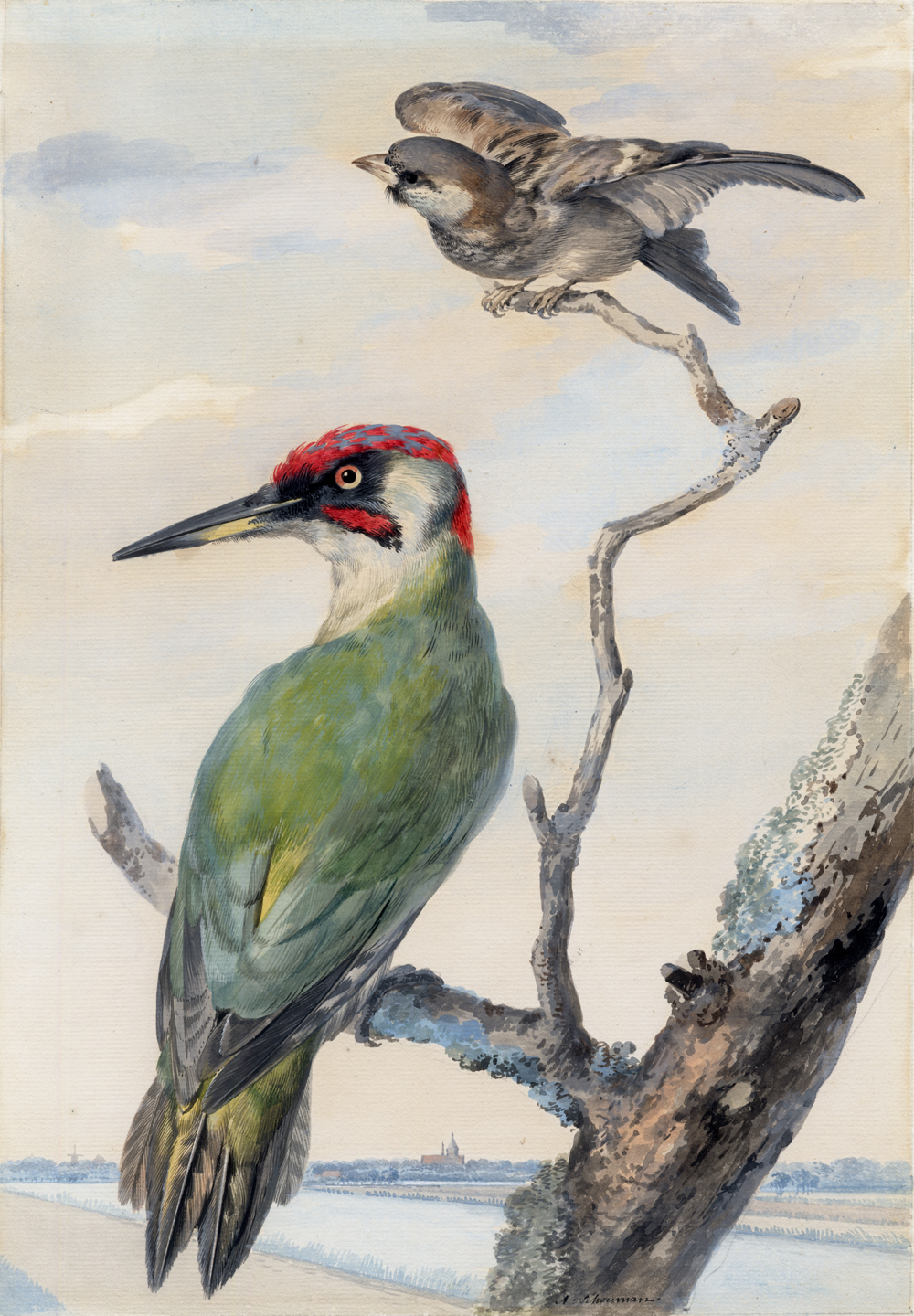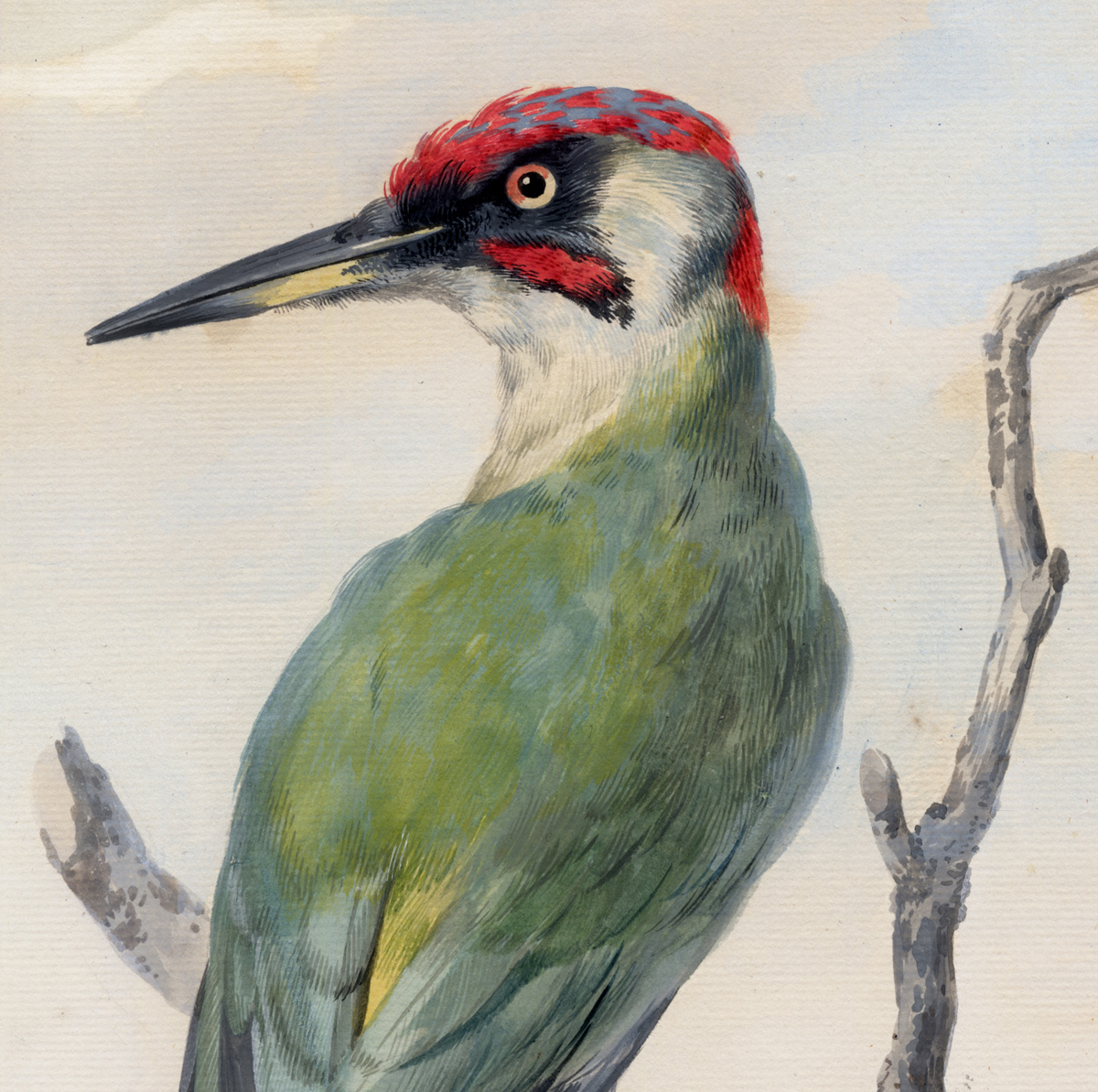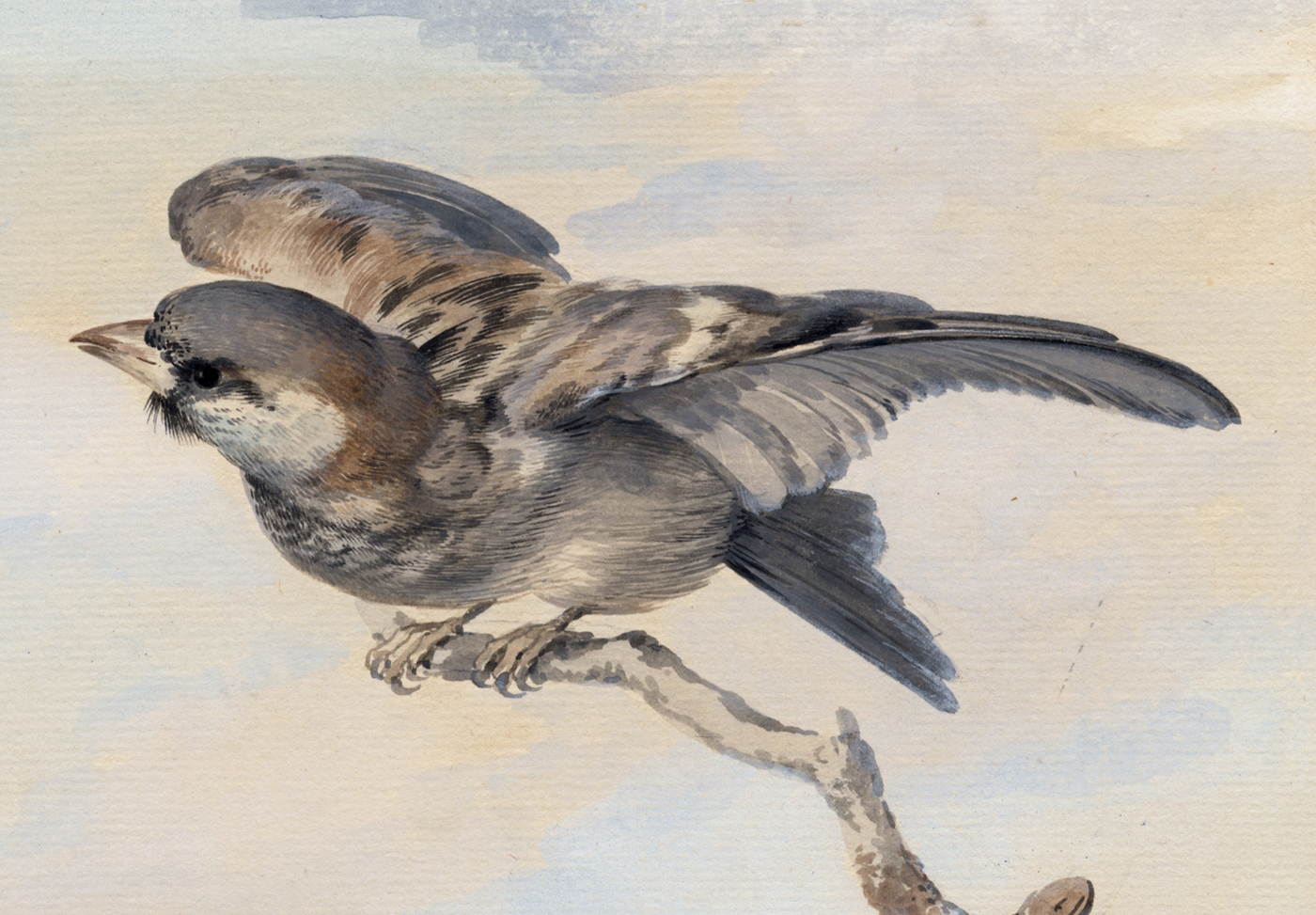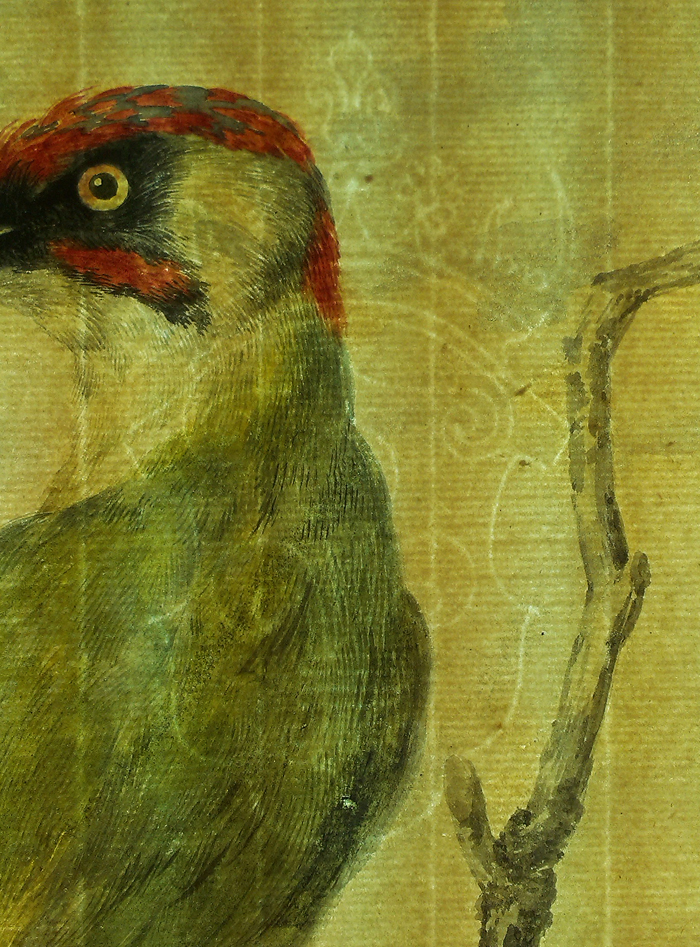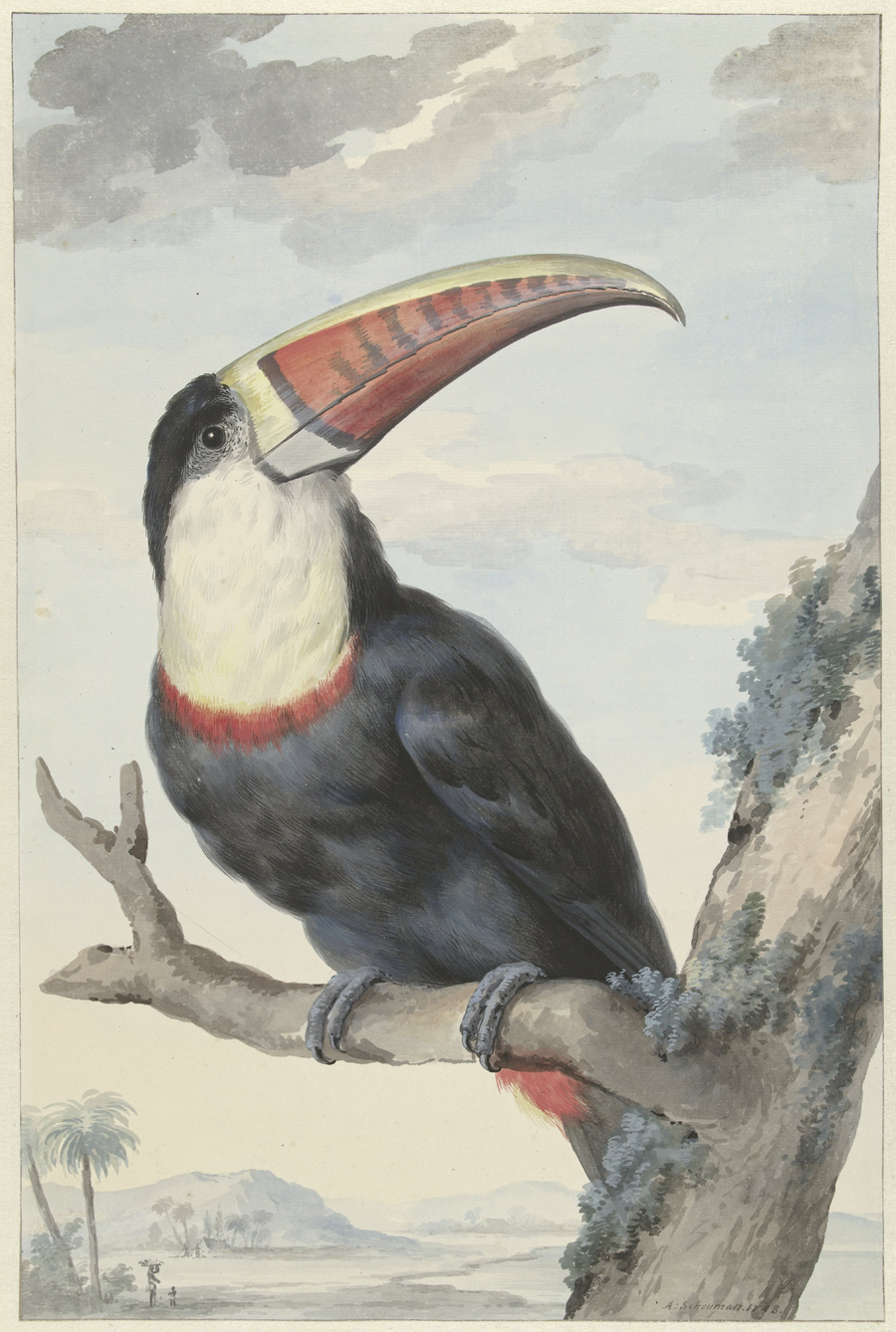AERT SCHOUMAN (Dordrecht 1710 – 1792 The Hague)
Aert Schouman (Dordrecht 1710 – 1792 The Hague)
A Green Woodpecker and a Sparrow in a Tree
Watercolour and bodycolour, watermark crowned shield with French lily, 394 x 274 mm (15.5 x 10.8 inch) (sheet); 376 x 260 mm (14.8 x 10.2 inch) (painted area, within pencil lines)
Signed ‘A: Schouman’ (pen and brown ink, along the lower edge)
Inscribed ‘N. 21’ and ‘No 30’ (pencil, recto) and ‘162’ (pencil, verso)
Provenance
- Probably Jacobus Lauwers; his sale, Amsterdam (Van der Schley … Pruissenaar), 13 December 1802, Album G, no. 11 ‘Een groene Specht en een Winterkoninkje, op de tak van een Boom, in een Landschap, zeer kunstig, door A. Schouwman.’ (Dfl. 7.10 to ‘Bernard’)1
- Private collection, The Netherlands
***
Aert Schouman was highly productive and worked in a wide variety of media, including painting and drawing, printmaking and glass engraving.2 He was also active as an art dealer, like many of his fellow artists at the time. He trained in Dordrecht under the genre and portrait painter Adriaen van der Burgh (1693–1733), before teaching drawing in his native town, and subsequently in Middelburg and The Hague. In addition to portrait commissions, he painted decorative works such as chimneypieces and wall-hangings. He also produced a large number of watercolour drawings, including landscapes and topographical views. However it were his studies of plants and animals for which he was most celebrated. His lively watercolours of birds make him one of the greatest animaliers of the eighteenth century.
When it came to wildlife, it was the bird kingdom which most attracted Schouman, as witnessed by the many watercolours he produced on the theme. On his death in 1792, he left behind 588 watercolours of birds, 250 sheets devoted to plants and 100 featuring mammals. It has so far proved difficult to determine who precisely were the customers for drawings of this kind, although the clientele for Schouman’s animal watercolours is likely to have included zoologists as well as the usual art collectors.3 Cabinets of curiosities were still extremely popular in 18th-century Holland, and it was also fashionable in that period for princes and kings to have zoological gardens laid out for pleasure and instruction.
Schouman drew birds throughout his life. The earliest sheet appears to date from 1734, while he must have produced his final ones at advanced age – the Frits Lugt collection at the Fondation Custodia has a watercolour of a bird of paradise, dated 1789, when the artist was 79 years old.
Aert Schouman was an exceptionally accomplished watercolourist. He set these particular birds down on paper without any preliminary drawing. With rapid and transparent brushstrokes, he expertly captured the shine and subtle colours of the birds’ feathers, and the execution of the woodpecker’s eye with its strong, almost modern, use of red, yellow and black washes is masterly. To have achieved such faithful likenesses of birds, he must have studied his models at length, enabling him to capture their very essence. Indeed, they look as if they might flly away at any moment. Schouman favoured birds with distinctive or exotic features; our sheet can for instance be compared to a watercolour of a white-throated toucan of 1748 in the Rijksmuseum, Amsterdam (fig).4
I would like to thank Drs Charles Dumas, The Hague, for kindly confirming the attribution to Schouman.5
Other works in the gallery by Schouman can be found here, and here.
SOLD TO A PRIVATE COLLECTOR, BY WHOM BEQUEATHED TO THE METROPOLITAN MUSEUM OF ART, NEW YORK
1. Although the smaller bird depicted is a sparrow (‘huismus’) and not a wren (‘winterkoninkje’), the typical threathening position of the sparrow is similar to that of the wren, which may have caused the cataloguer’s confusion. I am grateful to Klaas Post for providing information on this matter.
2. For the artist, see: L.J. Bol, Aart Schouman, Ingenious painter and draughtsman, Doornspijk 1991.
3. R.-J. te Rijdt, Kleur en Raffinement. Tekeningen uit de Unicorno collectie, Zwolle 1994, p. 111.
4. Watercolour, 482 x 319 mm; inv. no. RP-T-FM-138. See J.W. Niemeijer, Eighteenth-Century Watercolors from the Rijksmuseum Printroom, Amsterdam, Amsterdam 1993, pp. 128-29, cat. no. 57.
5. Upon examination of the original on 17th September 2014.
